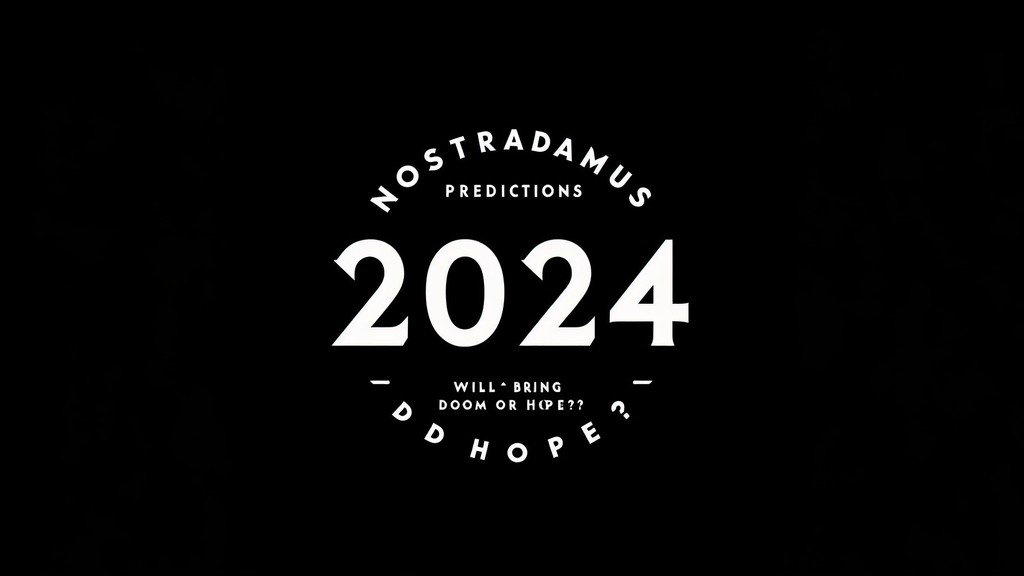What is SAP Master Data Management (SAP MDM)
Let’s discuss SAP MDM.
Introduction
In today’s data-driven business landscape, managing master data is crucial for organizations aiming to stay competitive and make informed decisions. SAP Master Data Management (SAP MDM) plays a pivotal role in achieving this goal. In this article, we’ll delve into the world of SAP MDM, exploring its purpose, components, benefits, and how it compares to other SAP solutions.
Let’s embark on this journey to unravel the intricacies of SAP MDM! 🌟
What is MDM?
Master Data Management (MDM) is a strategic approach to managing an organization’s critical data assets. It focuses on maintaining consistent, accurate, and high-quality master data across various systems and applications. Let’s break down the key aspects of MDM:
Purpose of MDM
- Data Consistency: MDM ensures that master data (such as customer information, product details, and supplier records) remains consistent across different departments and business units.
- Data Governance: It establishes rules, policies, and processes for data creation, maintenance, and usage.
- Data Quality: MDM aims to improve data accuracy, completeness, and reliability.
- Data Integration: By harmonizing data from disparate sources, MDM facilitates seamless integration across systems.
How MDM Works
- Data Identification: Identify the critical data elements that need to be managed centrally.
- Data Modeling: Create a logical model representing the relationships between master data entities.
- Data Cleansing: Remove duplicates, standardize formats, and validate data.
- Data Distribution: Distribute clean, consistent data to relevant systems.
- Data Governance: Establish data stewardship roles and enforce data policies.
In summary, MDM acts as the custodian of an organization’s master data, ensuring its reliability and usability for informed decision-making. 🗂️✨
What is SAP Master Data Management (SAP MDM)?
SAP Master Data Management (SAP MDM) is a technology-driven discipline that ensures the accuracy, completeness, and consistency of master data across an organization. Let’s dive deeper into what SAP MDM entails:
Components of SAP MDM
- Data Modeling: SAP MDM provides a framework for creating a logical model that defines how master data entities (such as customers, products, and suppliers) relate to each other. This modeling ensures a unified view of data.
- Data Governance: MDM establishes processes, roles, and responsibilities for managing master data. It enforces data quality standards, security, and compliance.
- Data Distribution: SAP MDM facilitates the distribution of clean, reliable master data to various systems and applications. This ensures that all stakeholders access consistent information.
- Data Synchronization: MDM synchronizes master data across different systems, eliminating data silos and redundancy.
Benefits of SAP MDM
- Unified View: Organizations gain a single, authoritative source of truth for master data, reducing confusion and inconsistencies.
- Data Quality: Clean, accurate data leads to better decision-making and operational efficiency.
- Streamlined Processes: MDM simplifies data maintenance, updates, and distribution.
- Cross-Functional Insights: Consistent master data enables comprehensive analytics and reporting.
- Compliance and Audit Trails: MDM ensures adherence to regulations and provides an audit trail for financial data.
In summary, SAP MDM empowers businesses to harness the full potential of their master data, driving excellence across processes and functions. 🌐✨
What is SAP Master Data Governance (SAP MDG)?
SAP Master Data Governance (SAP MDG) is a powerful solution that empowers enterprises to create a unified, trusted view of their business-critical data. Let’s explore the key aspects of SAP MDG:
Unified View of Business Data
- SAP MDG provides a central hub for managing master data across various domains (such as customers, suppliers, products, and financials). This unified view ensures consistency and transparency.
- Role-based processes allow different stakeholders to collaborate effectively in maintaining and governing master data.
Components of SAP MDG
- Data Modeling and Harmonization: SAP MDG allows organizations to define data models that align with their business requirements. Harmonization ensures that master data adheres to consistent standards.
- Data Mapping and Replication: Organizations can map data from various source systems to a common format within SAP MDG. Replication ensures that changes made in MDG are propagated to relevant systems.
- Data Quality Management: SAP MDG includes data quality checks, validation rules, and data enrichment capabilities. This ensures high-quality, reliable master data.
- Workflow and Approval Processes: Role-based workflows streamline data creation, modification, and approval. This helps maintain data integrity and compliance.
- Integration with SAP and Non-SAP Systems: SAP MDG seamlessly integrates with both SAP and non-SAP applications, allowing consistent data management across the entire landscape.
Benefits of SAP MDG
- Improved Data Quality: Clean, accurate master data leads to better decision-making and operational efficiency.
- Efficient Processes: Role-based workflows and automation reduce manual effort and enhance productivity.
- Compliance and Governance: SAP MDG enforces data governance policies, ensuring adherence to regulations and business rules.
- Real-time Insights: A single source of truth enables comprehensive analytics and reporting.
- Foundation for Digital Transformation: SAP MDG supports organizations in their journey toward becoming data-driven enterprises.
In summary, SAP MDG empowers businesses to maintain high-quality master data, drive operational excellence, and stay agile in a dynamic business environment. 🌐🔍✨
What is SAP Materials Management (SAP MM)?
SAP Materials Management (SAP MM) is a critical module within the SAP ERP suite that focuses on efficient material management, inventory control, and warehouse operations. Let’s explore the key aspects of SAP MM:
Master Data Components in SAP MM:
- Material Master:
- The Material Master serves as a central repository containing detailed information about all materials an organization procures, produces, stores, and sells.
- Key Data Fields:
- Basic Data: Includes material type, industry sector, material group, and classification.
- Sales Data: Relevant for sales processes, such as sales organization and distribution channel.
- Purchasing Data: Pertains to procurement, including material group, purchasing organization, and preferred vendor.
- Plant Data: Provides details about storage location, unit of measure, and valuation class.
- Warehouse Management Data: Includes storage type and section data for warehouse-managed materials.
- Vendor Master:
- The Vendor Master contains information about suppliers or vendors from whom the organization procures materials or services.
- Key Data Fields:
- General Data: Includes vendor name, address, communication details, and payment terms.
- Company Code Data: Specific to the company code, such as reconciliation account and payment methods.
- Purchasing Data: Details about the vendor’s currency, delivery conditions, and order currency.
- Accounting Data: Information related to the vendor’s account, tax details, and payment terms.
- Info Record:
- The Info Record links materials and vendors, storing procurement-related information.
- It helps determine the source of supply, pricing conditions, and other relevant data.
Features of SAP MM (Materials Management):
- Efficient Procurement Processes:
- SAP MM streamlines the entire procurement lifecycle, from material requisition to purchase order creation.
- It ensures timely and cost-effective procurement of raw materials and goods.
- Inventory Management:
- SAP MM handles inventory efficiently, tracking stock levels, movement, and storage locations.
- It prevents shortages and optimizes stock availability.
- Material Valuation:
- SAP MM provides accurate valuation of materials based on various factors such as price, currency, and quantity.
- It ensures consistency in financial reporting.
- Goods Receipt and Inspection:
- SAP MM facilitates seamless goods receipt processes, including quality checks and acceptance.
- It ensures that received materials match the purchase order specifications.
- Batch and Serial Number Tracking:
- SAP MM allows tracking of materials by batch or serial numbers.
- This feature is crucial for industries like pharmaceuticals and electronics.
Summary:
SAP MM plays a pivotal role in maintaining an organization’s supply chain integrity. By effectively utilizing SAP MM, businesses can optimize their production lines, streamline logistics, and deliver materials to customers efficiently and cost-effectively. 📦🌟
SAP MDM vs. SAP MDG
When it comes to managing master data within the SAP ecosystem, SAP Master Data Management (MDM) and SAP Master Data Governance (MDG) are two essential tools. Let’s explore their differences:
1. SAP MDM (Master Data Management)
- Technology and Scope:
- MDM is a standalone product that can be implemented by both SAP and non-SAP customers.
- It uses its own flexible data models and can handle various master data objects, regardless of whether they originate from SAP system environments or other sources.
- MDM is more mature and has been in the market for a longer time.
- Distribution of Data:
- In the MDM solution, master data is directly distributed to ERP systems via Process Integration (PI).
- Changes to master data are made purely within MDM and then updated in the ERP system.
2. SAP MDG (Master Data Governance)
- Integration and Landscape:
- MDG is an integral part of the SAP Business Suite, residing within the ECC (Enterprise Core Component) system.
- Only ECC customers can take advantage of MDG.
- It uses ERP data models (requires at least ERP 6.0 and enhancement package 5).
- Centralized Governance:
- MDG offers a centralized approach to master data management within the SAP landscape.
- It provides a single point of control for creating, maintaining, and governing domain-specific master data (such as customers, suppliers, products, and financials).
- Workflow and User Interface:
- MDG leverages the SAP standard workflow out of the box for central data maintenance.
- It offers a unified user interface (UI) that combines workflow, data maintenance, and distribution actions.
- The UI can be displayed in either the SAP Portal or NetWeaver Business Client.
- Data Circulation:
- In MDG, data circulates in a circuit:
- Data originates from the ERP system.
- Adjustments and consolidation occur within MDG.
- The updated data is distributed via Process Integration (PI).
- In MDG, data circulates in a circuit:
Choosing the Right Solution
The choice between SAP MDM and SAP MDG depends on technical and process-oriented criteria. Consider the following factors:
- MDM is versatile and can handle various master data objects, making it suitable for non-SAP environments.
- MDG provides centralized governance within the SAP Business Suite, ensuring consistency and compliance.
In summary, while MDM focuses on direct data distribution, MDG emphasizes centralized governance and integration with the SAP landscape. Organizations should evaluate their specific needs and system landscape to determine the best fit. 🌐🔍✨
SAP MDM vs. SAP MM
When it comes to managing master data within the SAP ecosystem, SAP Master Data Management (MDM) and SAP Materials Management (MM) serve distinct purposes. Let’s explore their differences:
1. SAP MDM (Master Data Management)
- Scope and Purpose:
- MDM focuses on maintaining consistent and high-quality master data across various systems, regardless of whether they are SAP or non-SAP systems.
- It acts as a central repository for master data, ensuring data accuracy, governance, and distribution.
- Components:
- Data Modeling: MDM allows organizations to create flexible data models for various master data objects (such as customers, products, and suppliers).
- Data Governance: MDM enforces data quality standards, security, and compliance.
- Data Distribution: MDM ensures that clean master data is distributed to relevant systems.
2. SAP MM (Materials Management)
- Scope and Purpose:
- MM is a critical module within the SAP ERP suite that specifically focuses on material management, procurement, and inventory control.
- It deals with operational aspects related to materials, such as purchasing, inventory management, and logistics.
- Master Data Components in SAP MM:
- Material Master: Contains detailed information about materials (e.g., products, raw materials) used in production, sales, and procurement.
- Vendor Master: Stores information about suppliers from whom materials are procured.
- Info Record: Links materials and vendors, providing procurement-related details.
- Features of SAP MM:
- Procurement Processes: MM streamlines material requisition, purchase order creation, and vendor management.
- Inventory Management: Tracks stock levels, movement, and storage locations.
- Material Valuation: Accurately values materials based on price and quantity.
- Goods Receipt and Inspection: Ensures received materials match specifications.
- Batch and Serial Number Tracking: Crucial for industries like pharmaceuticals.
Choosing the Right Solution
- Use Case:
- Choose MDM when you need centralized governance and data distribution across systems.
- Opt for MM when you specifically deal with material-related processes within the SAP landscape.
- Integration:
- MDM integrates with both SAP and non-SAP systems.
- MM is an integral part of the SAP Business Suite.
In summary, while SAP MDM focuses on master data governance and distribution, SAP MM handles material-related processes within the SAP environment. Organizations should evaluate their specific needs to make an informed choice. 🌐🔍✨
FAQs
Let’s address some common questions related to SAP MDM, SAP MDG, and SAP MM:
- Is SAP MDG the same as SAP MDM?
- No, they serve different purposes:
- SAP MDM focuses on managing master data across systems (both SAP and non-SAP), ensuring consistency and quality.
- SAP MDG specifically governs master data within the SAP landscape, providing centralized control and integration.
- No, they serve different purposes:
- What is MDM in SAP?
- MDM (Master Data Management) in SAP refers to the practice of harmonizing, maintaining, and distributing consistent master data across an organization. It ensures data accuracy, governance, and reliability.
- Can SAP MDM and SAP MM work together?
- Yes, they can complement each other:
- SAP MDM ensures consistent master data across systems, including materials managed by SAP MM.
- SAP MM handles material-specific processes within the SAP environment.
- Yes, they can complement each other:
Remember that choosing the right solution depends on your organization’s specific needs and system landscape. 🤝🔍✨
Conclusion
In this comprehensive exploration of SAP Master Data Management (SAP MDM), we’ve journeyed through the intricacies of managing critical data assets. Let’s recap the key takeaways:
- MDM serves as the custodian of an organization’s master data, ensuring consistency, accuracy, and reliability.
- SAP MDM provides a robust framework for creating data models, enforcing governance, and distributing clean master data.
- SAP Master Data Governance (SAP MDG) complements MDM by offering centralized control within the SAP landscape.
- SAP Materials Management (SAP MM) focuses on material-related processes, procurement, and inventory management.
Remember that effective master data management is not just about technology; it’s about aligning people, processes, and data to drive business excellence. As organizations continue their digital transformation journeys, mastering master data remains a critical success factor.
Thank you for joining us on this enlightening voyage. May your data always be accurate, your decisions informed, and your business thriving! 🌟📊🌐
See Also,




